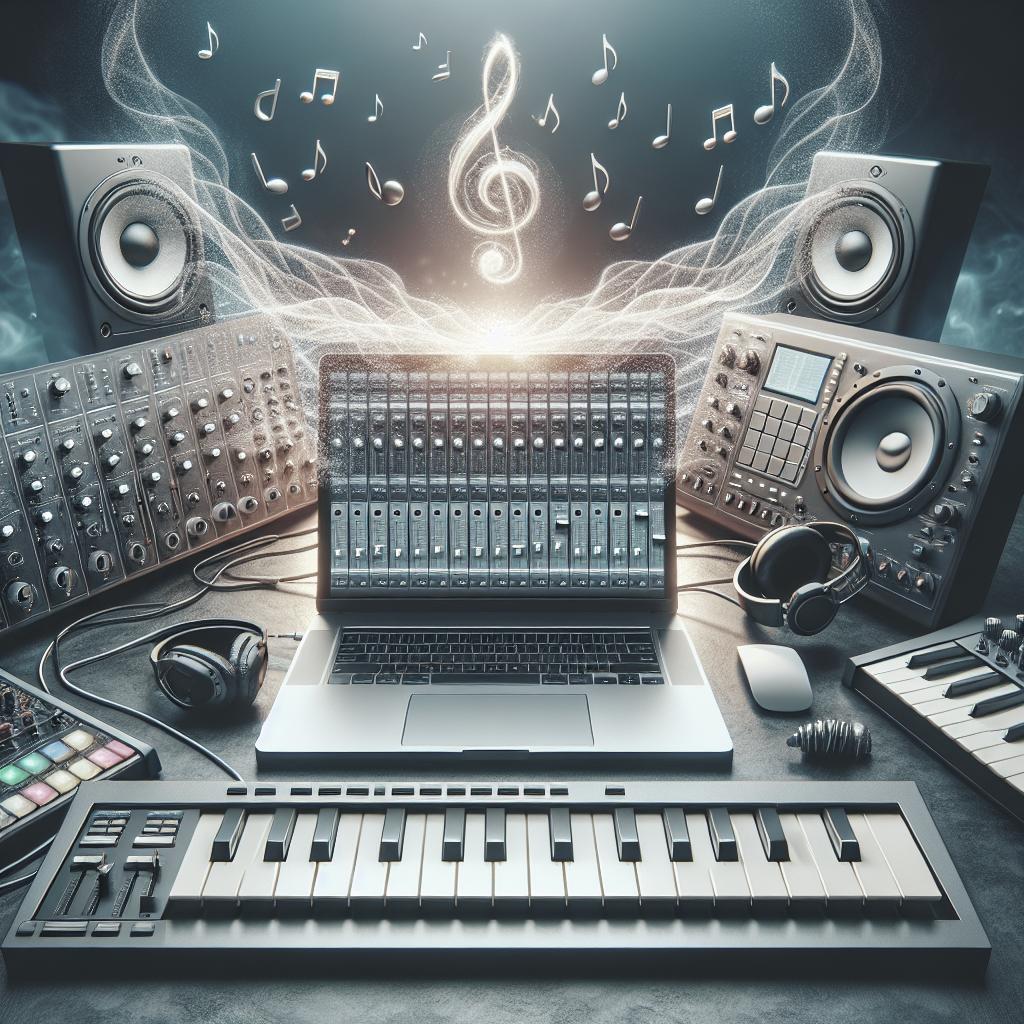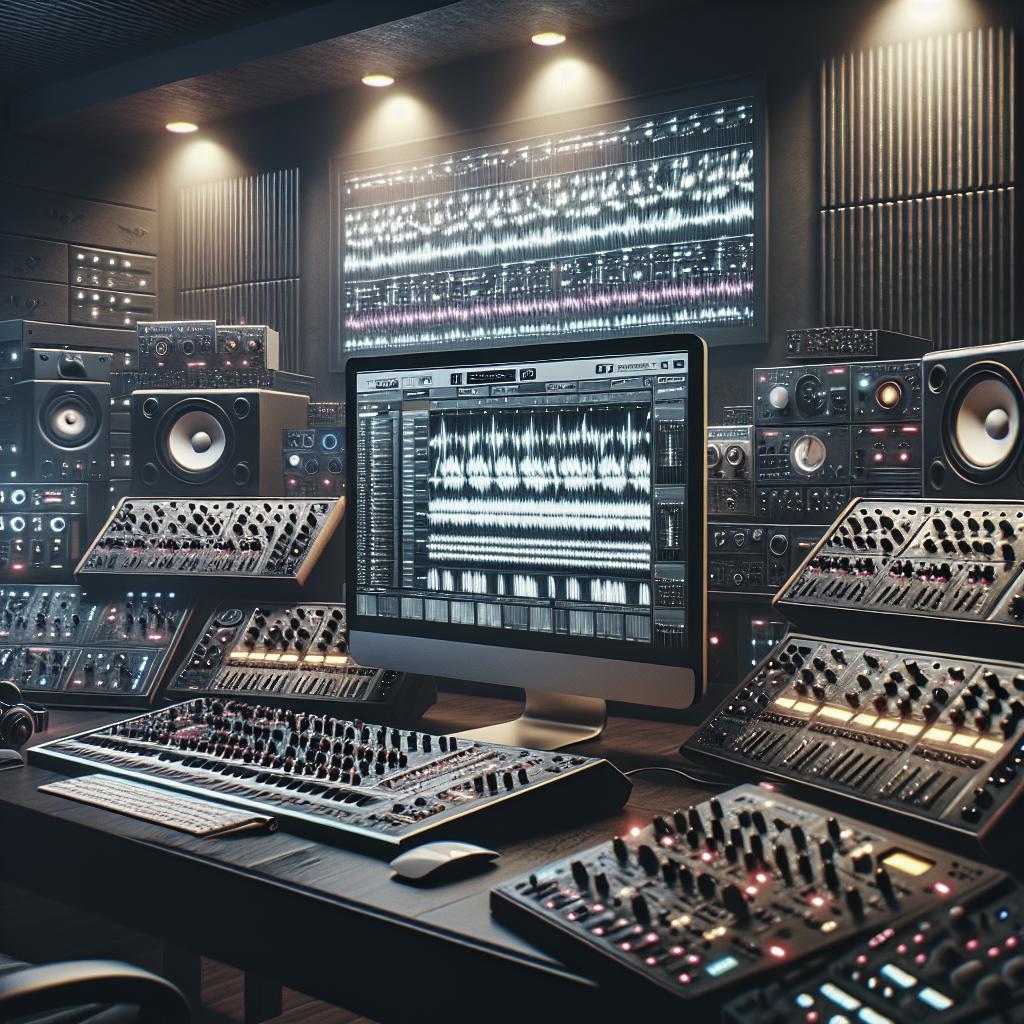<>
Electronic music production has become a dynamic and innovative field, constantly pushing the boundaries of sound. Whether you’re a seasoned producer or a beginner looking to make your mark, the right audio interface is crucial. With various options available, selecting the best audio interface can be daunting. In this guide, we delve into the top audio interfaces for different needs, ensuring you can find the perfect match for your electronic music production setup. From the best overall interface to specialized choices for vocals, streaming, podcasting, and more, we have you covered. Each selected interface is thoroughly tested and reviewed.
Our top picks
Choosing the best audio interface involves considering several factors, including sound quality, build, connectivity options, and latency. For this article, we narrowed down our selection based on user reviews, expert opinions, and extensive testing. Our top picks include interfaces suitable for various skill levels and specific needs in electronic music production.
Best overall
1. Focusrite Scarlett 2i2 4th Gen
The Focusrite Scarlett 2i2 4th Gen is a beloved choice among electronic music producers due to its reliable performance and impressive sound quality. The fourth generation of this device boasts significant improvements, including a high-resolution 24-bit/192kHz converter, minimal latency, and two upgraded Scarlett mic preamps. The Scarlett 2i2 excels with its user-friendly interface, making it suitable for both beginners and experienced producers. Its robust build and premium components ensure durability, while the accompanying software bundle provides a comprehensive set of tools for music production. The device’s portability and ease of use make it the best overall option in our selection.
Best for beginners
2. Audient iD4 MkII
The Audient iD4 MkII is the perfect pick for beginners diving into electronic music production. This interface offers a balance of simplicity and high-quality performance, ensuring a smooth learning curve. With the renowned Audient mic preamp and a JFET DI for guitars, the iD4 MkII guarantees pristine sound capture. Beginners will appreciate the intuitive design, featuring dedicated volume and mix controls, USB-C connectivity, and zero-latency monitoring. Additionally, its compact size allows for a clutter-free workspace. The extensive software bundle and detailed online tutorials included with the iD4 MkII provide a comprehensive introduction to the world of music production.
Best budget option
3. Behringer U-Phoria UMC22
The Behringer U-Phoria UMC22 is an excellent budget option for those looking to start their electronic music production journey without breaking the bank. Despite its affordable price, this interface delivers respectable performance with a 48kHz resolution, a MIDAS-designed mic preamp, and a 2×2 USB audio interface. The UMC22 features direct monitoring and a headphone connector, ensuring seamless recording sessions. For budget-conscious producers, its rugged build and simple installation process make it an ideal choice. The UMC22’s straightforward design and functionality allow users to focus more on their creative process and less on technical complexities.
Best for Mac
4. Universal Audio Apollo Twin X
For Mac users seeking top-tier performance, the Universal Audio Apollo Twin X stands out as the best option. Renowned for its unparalleled audio quality, this interface features UA’s Unison preamps and real-time UAD processing, providing studio-grade sound and low latency even in complex sessions. The Apollo Twin X offers seamless integration with macOS, ensuring reliable connectivity and compatibility with popular DAWs. Its Thunderbolt 3 connection allows for ultra-fast data transfer, minimizing latency and enhancing the overall production experience. Additionally, the interface includes a robust software suite with a variety of high-quality plug-ins.
Best for guitar
5. IK Multimedia AXE I/O
The IK Multimedia AXE I/O is tailored specifically for guitarists involved in electronic music production. Featuring a dedicated guitar input with a range of tonal shaping options, such as Z-Tone impedance control and a built-in tuner, this interface provides optimal sound capture for guitar recordings. Beyond its guitar-centric features, the AXE I/O boasts pristine audio quality, 24-bit/192kHz resolution, and low-latency performance. The included AmpliTube 4 Deluxe software suite further enhances its appeal, offering a comprehensive collection of amp models, effects, and customizable presets. The AXE I/O is a compelling choice for guitarists looking to integrate their instrument seamlessly into electronic music production.
Best for streaming
6. Presonus Revelator io24
The Presonus Revelator io24 is the go-to audio interface for streaming enthusiasts in the electronic music community. Designed with streamers and content creators in mind, this versatile interface combines studio-quality audio with user-friendly streaming tools. It features a 2×4 mixer, loopback capabilities, and customizable presets tailored for live streaming. With its high-resolution capture at 24-bit/96kHz, the Revelator io24 ensures crystal-clear audio quality for both recording and broadcasting. The interface’s intuitive design and the integrated mixer make it easy to manage multiple audio sources in real-time, ideal for live performances and interactive streaming sessions.
Best for vocals
7. SSL 2+
The SSL 2+ by Solid State Logic is a top pick for vocalists looking to produce electronic music. Known for its exceptional preamps and 24-bit/192kHz resolution, the SSL 2+ delivers rich, detailed recordings, capturing the nuance and dynamics of a vocalist’s performance with remarkable clarity. The SSL 2+ interface includes features like the Legacy 4K mode, which imparts an analog console character to recordings, adding a touch of warmth and depth. With its robust build, intuitive controls, and versatile connectivity options, including MIDI, the SSL 2+ is a stellar choice for vocalists seeking studio-grade audio fidelity in their home setup.
Best for podcasting
8. Rode Rodecaster Duo
The Rode Rodecaster Duo is designed specifically for podcasters looking to integrate electronic music into their productions. This all-in-one solution combines a podcast production console with a high-quality audio interface, offering built-in effects, intuitive touch controls, and easy integration with microphones and musical instruments. The Rodecaster Duo’s feature set includes multi-track recording, programmable sound pads, and advanced audio processing capabilities. It simplifies the process of producing professional-grade podcasts, ensuring clarity and polish in every episode. For podcasters aiming to elevate their content with music tracks, sound effects, and live interaction, the Rodecaster Duo is an invaluable tool.
Best with MIDI
9. Motu M4
The Motu M4 is a fantastic choice for electronic music producers who heavily rely on MIDI integration. This interface offers a powerful blend of pristine audio quality and extensive MIDI connectivity, featuring MIDI input/output, ESS Sabre32 Ultra DAC technology, and low-latency performance. With its 4-in/4-out configuration, the M4 provides flexibility for various recording and monitoring setups. The full-color LCD screen on the front panel offers a clear view of audio levels, making it easy to manage sessions. Its rugged metal chassis ensures durability, while the included software bundle enriches the MIDI production experience, making it ideal for electronic music producers.
Spec comparison
Creating the right balance between features and costs can be tricky. Here’s a quick comparison of our top picks to help you make an informed decision:
| Model | Resolution | Connections | Price |
|---|---|---|---|
| Focusrite Scarlett 2i2 4th Gen | 24-bit/192kHz | 2 in/2 out | $$ |
| Audient iD4 MkII | 24-bit/96kHz | 2 in/2 out | $$ |
| Behringer U-Phoria UMC22 | 48kHz | 2 in/2 out | $ |
| Universal Audio Apollo Twin X | 24-bit/192kHz | 2 in/6 out | $$$$$ |
| IK Multimedia AXE I/O | 24-bit/192kHz | 2 in/5 out | $$$$ |
| Presonus Revelator io24 | 24-bit/96kHz | 2 in/4 out | $$$ |
| SSL 2+ | 24-bit/192kHz | 2 in/4 out | $$$ |
| Rode Rodecaster Duo | 24-bit/48kHz | 4 in/4 out | $$$$ |
| Motu M4 | 24-bit/192kHz | 4 in/4 out | $$ |
Also tested
In addition to our top picks, other audio interfaces such as the Native Instruments Komplete Audio 2, Avid Fast Track Solo, and Tascam US-2×2 were also tested but did not make the final list primarily due to lacking specific features compared to our top choices. These interfaces, however, still offer decent performance for those with specific needs or tighter budgets.
How we test audio interfaces
Our testing process for audio interfaces involves evaluating sound quality, latency, build quality, ease of use, and software integration. We use these interfaces in various real-world scenarios, including recording vocals and instruments, integrating with DAWs, and testing live streaming and podcast setups. Feedback from experienced producers and sound engineers also plays a critical role in our review process.
Why trust us
Our team comprises seasoned audio engineers, music producers, and tech enthusiasts passionate about staying up to date with market trends. We conduct in-depth testing, research, and consultations with industry professionals to provide well-rounded and trustworthy reviews. Our commitment is to help our readers make informed decisions that enhance their music production endeavors.
FAQs
What is an audio interface?
An audio interface is a device that converts analog audio signals into digital format and vice versa. It acts as a bridge between musical instruments, microphones, and your computer, ensuring high-quality recording and playback.
Who are audio interfaces for?
Audio interfaces are essential for musicians, producers, podcasters, and anyone involved in audio recording or production. They offer superior sound quality and advanced features compared to built-in computer sound cards, catering to both beginners and professionals.
Do audio interfaces improve sound quality?
Yes, audio interfaces significantly enhance sound quality by providing low-latency recording, high-resolution audio conversion, and superior preamps. They ensure clear and detailed sound capture and playback, crucial for professional audio production.
What are the different types of audio interface?
Audio interfaces come in various types, including USB, Thunderbolt, FireWire, and PCIe. USB interfaces are the most common due to their compatibility and ease of use. Thunderbolt interfaces offer faster data transfer and lower latency, making them suitable for complex setups.
What is an acceptable latency for an audio interface?
Acceptable latency for an audio interface typically ranges between 5ms to 10ms. Lower latency is preferable as it reduces delay and ensures real-time monitoring, especially important in live performance and recording scenarios.
How much does an audio interface cost?
Audio interfaces vary widely in price, typically ranging from $50 for budget models to $2000+ for high-end professional units. The cost depends on the features, build quality, and brand reputation.
What are the popular brands of audio interface?
Popular brands include Focusrite, Universal Audio, PreSonus, Behringer, Audient, and Solid State Logic (SSL). These brands offer a range of audio interfaces catering to different needs and budgets.
Should I use forums and user reviews for my research?
Yes, forums and user reviews can be invaluable resources for research. They provide real-world insights and experiences that can complement expert reviews. However, always cross-check information from multiple reliable sources for a well-rounded perspective.
Shopping advice
When shopping for an audio interface, consider your specific needs such as the number of inputs/outputs, compatibility with your DAW, and whether you require special features like MIDI connectivity or direct monitoring. Always read expert and user reviews, and don’t hesitate to test the interface if possible.
Meet the experts
Our team comprises individuals with extensive experience in the audio production and technology sectors. Their combined expertise ensures comprehensive and well-informed reviews, helping you find the best audio interface to elevate your electronic music production.
Read more:
For additional tips, product reviews, and insights into music production, don’t miss our other blog posts. Stay up to date with the latest trends and gear to enhance your creative journey.
Get the MusicRadar Newsletter
Subscribe to the MusicRadar newsletter for regular updates on the newest reviews, tutorials, and industry news. Stay informed and inspired as you continue your music production journey.


